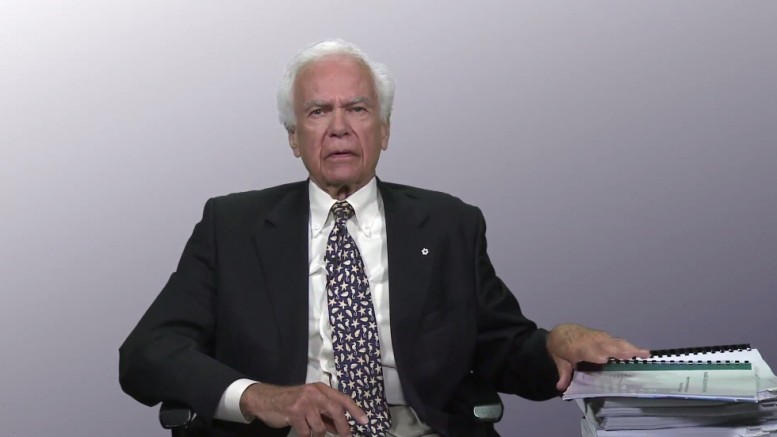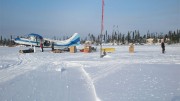A review panel tasked with determining the cause of the Samarco tailings disaster in Minas Gerais, Brazil, 10 months ago has released its report on the immediate causes of the catastrophic failure of the Fundao dam at Samarco’s iron ore mining complex, which killed 19 people and devastated towns and river ecosystems downstream, ranking it as one of the world’s worst mining disasters in recent years.
The fifty-fifty owners of Samarco — mining giants BHP Billiton and Vale — retained New York City-based law firm Cleary Gottlieb Steen & Hamilton LLP to lead the investigation, which was only technical in nature and did not assign blame or evaluate company documents to a legal standard.
The law firm appointed four geotechnical experts to its Fundao Tailings Dam Review Panel: Norbert Morgenstern, the panel leader who has worked on more than 140 dam projects, has more than 330 academic papers published on the subject and acts on technical committees globally; Bryan Watts, Klohn Crippen Berger’s counsel chairman and former CEO, who has over 35 years of experience on dam projects; Steven Vick, an author and independent consultant in geotechnical engineering, with over 40 years of experience in technical and safety assessments for landfills and tailings dams; and Cassio Viotti, an independent consultant in dam engineering, with over 45 years of experience in all stages of dam and hydric structure conception and engineering.
(Morgenstern also chaired the B.C. government-commissioned Mount Polley Independent Expert Engineering and Review Panel on the cause of the August 2014 tailings dam failure at Imperial Metals’ Mount Polley copper-gold mine in B.C., which delivered a scathing report in January 2015. Steven Vick was also a member of that panel.)

The Fundao dam at Samarco’s iron ore mining complex in Minas Gerais, Brazil, just before its collapse on Nov. 5, 2015. Credit: fundaoinvestigation.com.
The massive tailings storage facility of Fundao contained sand tailings and slime, both waste by-products of the iron ore mining process. Apart from two large dike structures, the facility used natural barriers or abutments on the sides of the river valley.
The sands and slimes were supposed to be stored separately. Water could pass through the sands, which were stored behind dike 1. The slimes, which are comparable to impermeable clay, were stored directly upvalley in the same tailings facility in a reservoir behind dike 2, so that the sands and slimes were side by side, with a dike between them.

Diagram showing original, pre-2012 design of the Fundao tailings dam, with sandy material and slimes contained stored separately. Credit: fundaoinvestigation.com.
Another key part of the dam structure was a setback in dike 1 that was designed to take weight off a major drain area, which is where the catastrophic failure began.
As mine operators gradually stacked the sandy material behind dike 1 more than 100 metres high, compacted sand berms were raised higher and extended on top of the sandy material. The sands themselves were originally designed to be a dry stack, whereby water could pass through freely and drain out at the bottom.
But this dry-stack design was changed in 2011–2012, resulting in the sandy material being saturated with water halfway up. Because of this saturation, slime was able to migrate down the valley through dike 2 just under the risen water table into the upper layers of the sandy material. As more and more sandy tailings were placed behind dike 1 and the berms got taller with each raise, more and more pressure was exerted on the mid-level sands now contaminated with the slime.

Diagram showing the day before the the dam failure: sandy tailings with the water table delineated in blue and contaminated with slimes from upvalley, resulting “toothpaste-style” lateral extrusion (red arrow). Credit: fundaoinvestigation.com.
This extra weight squeezed the slime-sand mixture forward like toothpaste inside the tailings mound (technically called “lateral extrusion”). None of this movement was visible to the naked eye of operators at surface. Meanwhile the rest of the sand behind dike 1 was loose, uncompacted and saturated, creating a perfect condition to behave as a liquid.
The report notes the sand had contractive qualities, as well, meaning that when they were saturated and placed under stress such as additional weight, and then had the stress removed, they could “abruptly collapse.”
All of these factors combined so that when the slime-sand layer extruded forward, the sands above would collapse with no warning.
In the case of the Fundao dam, the collapse on Nov. 5, 2015, probably triggered by a small earthquake, released 60 million cubic metres of iron ore waste, killing 19, injuring 16 and destroying 200 homes downstream, as 600 local people were evacuated.
In March, the mine operators and government regulators agreed to a US$2.3-billion rehabilitation plan for the area. As of May 2016, impacted persons totalled 3,000 people close to the mine and 7,500 farther downstream in the Rio Doce.

Aerial view of the Fundao dam after its collapse on Nov. 5, 2015. Credit: WSJ.

The wreckage downstream from the Fundao dam after its collapse. Credit: Getty.
Related stories:
BHP tables US$6.4B loss in worst-ever year





Be the first to comment on "Editorial: Faulty design behind Samarco tailings disaster"